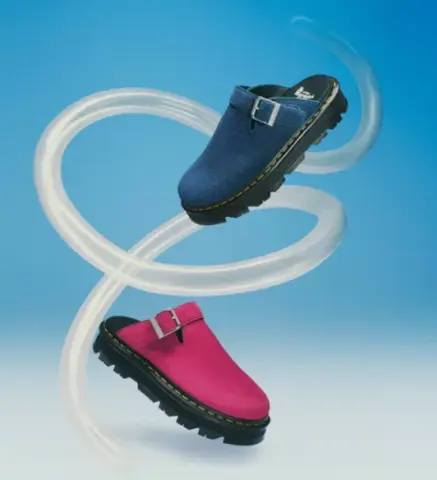We moved away from static pins and built a more dynamic PLP structure. Now our pages reflect what’s trending, what’s in stock, and what’s performing—while still allowing space for campaign messaging.
Niamh, Trading Manager EMEA
Dr. Martens is a globally recognized British footwear brand celebrated for its iconic boots and deep-rooted cultural heritage. With over 100 retail stores worldwide and a rapidly expanding eCommerce operation, Dr. Martens is committed to providing a frictionless, empowering experience across every channel.
Dr. Martens partnered with Fredhopper in the Americas and EMEA, implementing a scalable and personalized merchandising strategy that streamlined operations and enhanced the customer experience. This collaboration has positioned Dr. Martens for continued success in these key markets, ensuring that their unique brand ethos resonates with customers across both regions.
Friday afternoons used to be spent tweaking merchandising manually. Now, we trust the strategy and can use that time elsewhere. We’re probably saving two hours per week.
Niamh, Trading Manager EMEA
The Solution
To tackle these challenges, Dr. Martens collaborated with Fredhopper to implement a series of strategic initiatives:
Regionalized Ranking Cocktails
Integrated Metrics: Sales data, conversion rates, and unique purchases were used as primary factors for ranking. This helped ensure high-demand products surfaced appropriately in every region.
Localized Stock Visibility: Adjustments were made to prioritize products relevant to local climate and demand. For instance, winter boots were emphasized during colder months in Nordic regions, even with low sales data.
Enhanced Gendered Attributes & PLP Mix
Product Optimization: Key unisex items, such as the iconic 1460s boot, were carefully positioned to feature prominently in both men’s and women’s PLPs while also being prioritized for general unisex searches.
Stock Allocation Improvements: By expanding the data scope for smaller regions, Dr. Martens is now able to anticipate demand for unisex items more effectively. For markets like the Nordics, data is analyzed over a broader 30-day period across multiple regions to identify emerging trends and ensure accurate, market-specific stock allocation. This approach enhances product availability in smaller markets, reducing customer frustration from out-of-stock items while maintaining relevance to local demand patterns.
Localized Merchandising Adjustments
Enhanced Search & Filter Functionality
Dynamic Search Algorithms: New algorithms prioritized seasonal collections and trending products, ensuring customers could easily find the most relevant styles based on current demand.
We [visual merchandisers] feel a lot more confident in our merch now we have revamped our strategy. We know that if we get questions from the business around the VM on PLPs, we are able to justify it as we have a strong strategy in place using multiple regional and gendered attributes.
America, Visual Merchandiser EMEA
Conclusion
Dr. Martens’ collaboration with Fredhopper has resulted in significant improvements in global merchandising efficiency, personalization, and product discoverability. Through the refinement of regional ranking strategies, the optimization of gender-specific attributes, and the enhancement of search functionalities, Dr. Martens consistently delivers an outstanding shopping experience that is finely tuned to meet the diverse needs of various markets.



